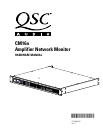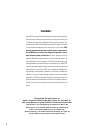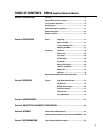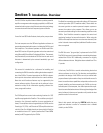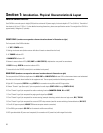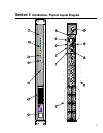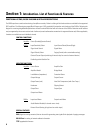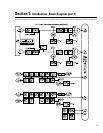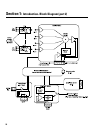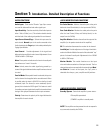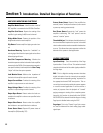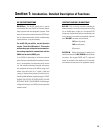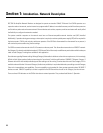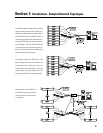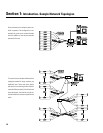
Section 1: Introduction- Overview
The QSC CM16a Amplifier Network Monitor provides powerful
amplifier management and zone paging capability in a QSControl
networked audio system using Ethernet networking technology
to communicate with the host computer/system controller.
From all of us at QSC Audio Products, thank you for your purchase.
The host computer uses the QSControl application software to
operate the networked audio system, including the CM16a’s and
their amplifiers. The software operates on the Microsoft Win-
dows NT® version 4.0 operating system and can be customized
using Microsoft® Visual Basic Professional Edition. The network
may theoretically have hundreds of CM16a’s but the real-world
limitation is determined by the network bandwidth, type and
configuration.
This manual is intended to be a reference for installing and
connecting the CM16a as well as outlining the hardware capabili-
ties of the CM16a. The actual operation of the CM16a is depen-
dant upon the instructions received from the control software.
Note that not all hardware features may be supported by the
current software revision. Please refer to the software’s docu-
mentation or help file for information regarding software fea-
tures, usage and functions.
The CM16a performs control and monitoring functions for QSC
amplifiers equipped with a DataPort. This could be up to eight 2-
channel or four 4-channel amplifiers (or some combination of
these). The amplifiers that are supported by the CM16a are the
PowerLight, PL2, DCA, and CX series of QSC amplifiers that have
a built-in Data Port. Models that do not have a built-in DataPort
or models that have a DP-1 option
(such as the EX and MXa
series)
are NOT supported by the CM16a.
The DataPort connections are made with ordinary VGA computer
monitor-type cables (HD-15 male-to-male). These cables are
the same type that are used on personal computer systems to
connect the monitor to the computer. This allows you to use
commonly available cabling for interconnecting amplifiers to the
CM16a. Each DataPort connection supports the control and
monitoring functions for two audio channels. When using the
CM16a with amplifiers that have more than two channels (such
as the 4 channel cinema amplifiers) additional DataPort connec-
tions are required.
The CM16a is not a “plug-and-play” replacement for the CM16.
The CM16a has a much improved feature-set and height has been
reduced from 2RU to 1RU. Additionally, connectors are slightly
different between the two. Weight has been reduced from 22 to
11 pounds.
A final note; The CM16a is a control and monitoring device that
relies on software to do its job. The functions and capabilities
provided in the design of the CM16a can only be realized with
proper software implementation. Keep in mind that this manual’s
intent is to outline these capabilities and provide a reference for
properly installing and interconnecting the CM16a to the net-
worked system’s host computer, the audio inputs and the ampli-
fiers to be controlled and monitored. A thorough knowledge of the
control software’s features and operation will provide the best
possible results for the end user.
Note: In this manual, bold type (e.g.
PORT A)
within the para-
graph text indicates a control or connection that is labeled
similarly on the CM16a.
5



